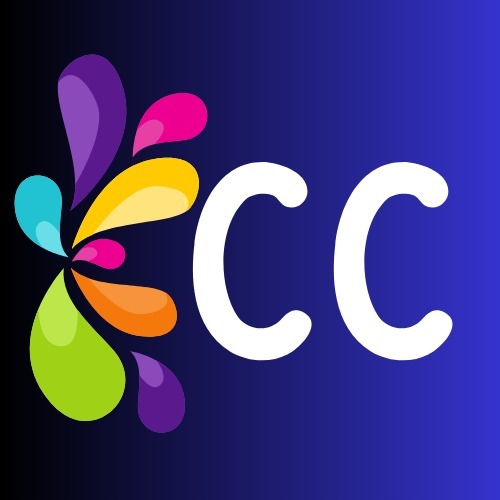Creation and Criticism
ISSN: 2455-9687
(A Quarterly International Peer-reviewed Refereed e-Journal
Devoted to English Language and Literature)
Vol. 08, Joint Issue 30 & 31: July-Oct 2023

Book Review
A Survey of Indian English Poetry
by Satish Kumar
Satish Kumar. A Survey of Indian-English Poetry. Bareilly: Prakash Book Depot, 2023 (Second Edition). Pp. 444. Rs. 825/-. ISBN: 978-93-91984-79-3.
Reviewed by Abnish Singh Chauhan
The second edition of A Survey of Indian-English Poetry by Dr. Satish Kumar, released in 2023, is a detailed and all-inclusive analysis of the historical development of Indian-English Poetry from the early nineteenth century to the twenties of 21st century, making it an excellent resource for understanding the complex fabric of this literary genre. The book meticulously includes new poets as well as “new poetic techniques, linguistic and stylistic devices” (Preface to the Second Edition, v), and therefore, serves as a comprehensive guide to its readers in a clear and engaging style.
Dr. Kumar’s book, standing alongside K.R.S. Iyengar’s seminal work— Indian Writing in English, not only chronicles the discussions of notable poets from the past and the present, but also covers specific chapters on women poets and their distinctive contributions to the field of Indian-English Poetry. The book is a rich repository of facts and figures about Indian-English Poetry, meticulously recording its evolution and milestones in 35 chapters on 444 pages.
The first chapter— “The Beginning” (1820-1900) opens with a remarkable note of the author: “Indian English poetry is the product of the meeting of the East and the West, which began with the introduction of English and English education in India” (1). Indian literature in English was invigorated and revitalized under the influence of English literature through the writings of Rammohan Roy, Michael Madhusudan Dutt, R.C. Dutt, Bankim Chandra, Toru Dutt, Swami Vivekananda, Swami Ramatirtha, and others. The second chapter— “The Great Pioneers” reflects the “influence of English romantic and Victorian poetry” (7), underlining the promise and originality in the works of early pioneers such as Henry Louis Vivian Derozio, K.P. Ghose, Michael Madhusudan Dutt, B.M. Malabari, Manmohan Ghose and N.K. Ghose. The third chapter focuses on the saint poets— Swami Vivekananda and Swami Ramatirtha, whose spiritual and mystical poetry profoundly influenced Paramhans Yogananda, Purohit Swami, Sri Sri Ravishankar and Jaggi Vasudeva Acharya. The fourth chapter is dedicated to Toru Dutt, “the child of Indian Renaissance and Reformation of the nineteenth century” (31). The fifth chapter— “The Era of National Awakening” (1901-1947), which is also known as the Age of Bal Gangadhar Tilak and Mahatma Gandhi in the history of India, as well as the other subsequent chapters trace the spirit of the Age, getting maturity in “the matter and manner” (49), particularly through the poetry of Rabindranath Tagore, Sarojini Naidu, Aurobindo, Sri Paramhans Yoganand and H.N. Chattopadhyaya.
The eleventh chapter is on “The Pondicherry School of Poetry or The Aurobindonians.” The chapter highlights the influence of Sri Aurobindo’s mystical and devotional poetry, “especially his knack of using symbols and images derived from the Vedas and Upnishadas (124), on the poets such as Nirodbaran, K.D. Sethna, D.K. Roy, Nolinikant Gupta, Punjalal, and Themis. The twelfth chapter— “Post-Independence / The New Poetry” (1948-2000) reflects that the new poets like Krishna Srinivas, Mahanand Sharma, Nissim Ezekiel, Shiv K. Kumar, Jayanta Mahapatra, A.K. Ramanujan, P. Lal, A.P.J. Abdul Kalam, Arun Kolatkar, O.P. Bhatnagar, I.K. Sharma, Baldev Mirza, K. Parthasarthy, K.D. Katrak, I.H. Rizvi, K.N. Daruwalla, Dom Moraes, Dilip Chitre, Gieve Patel, Adil Jassawala and others shed off the stigma of writing under the influence of English literature and make significant contribution through their poetic works “remarkable for fecundity and originality in themes and innovations in techniques” (129).
The twenty-fourth chapter on “Women Poets” inculcates the emergence of women poets like Monika Verma, Roshan Alkaji, Anna Sujatha Modayil, Gauri Pant, Gauri Deshpande, Sunita Jain, Mamata Kalia, Mahashweta Chaturvedi, Lakshmi Kanan, Ira De, Tapti Mookerji, Zahida Zaidi, Tilottama Ranjan, Lalitha Venkateswaran, Lila Ray and others, “articulating “female consciousness” (290). Kamala Das is “a trend-setter in Indian English poetry” (299) among others and, therefore, the next chapter is on her. The thirty-third and the thirty-fourth chapters explores the contribution of contemporary women poets— Suniti Namjoshi, Eunice De Souza, Temsulla Ao, Rukmini Bhaya Nair, Shanta Acharya, Smita Agarwal, Sujata Bhatt, Mamang Dai, Anjum Hasan, Arundhati Subramanian, Tishani Doshi, Meena Kandasamy, Meena Alexander, Menka Shivadasani, Reetika Vazirani,Mani Rao, K. Srilata, Mona Zote and Chandini Kapur, demolishing “stereotypes and all manifestations of discrimination in their poetry” (387).
The twenty-sixth chapter— “Contemporary English Poetry” and the subsequent six chapters highlight the “literature of change from the modern to the contemporary” (311). Poets like Gopal Honalgere, Syed Ameeruddin, Saleem, Peeradina, P.C.K. Prem, Hoshang Merchant, Arvind Krishan Mehrotra, Vijai Vishal, D.C. Chambial, R.K. Singh, Bibhu Padhi, Vikram Seth, Ravi,Ranganathan, Niranjan Mohanty, K.V. Dominic, Saroj Padhi, C.L. Khatri, Vihang A. Naik, M.A. Nare, Y.M.G. Gandhi, Prakash Joshi, R.C. Shukla, Hari Raj Singh, Nar Deo Sharma, Amrit Lal Pandey, R.K. Bhushan, Aga Shahid Ali, E.V. Ramkrishnan, S.L. Peeran, Vilas Sarang, Randhir Khare, P. Raja, Manohar Shetty, Vijai Sheshadri, Manas Bakshi, Charu Sheel Singh, Gopikrishnan Kottoor, Syed Ali Hamid, Jeet Thayil, Robin Ngangom, Sudhir K Arora, Abnish Singh Chauhan, Abhay Kumar, Sonnet Mondal and many others are vigorous, vibrant and genuine in the portrayal of intricacies of life and society of the whole world. The last chapter (35) — “Postscript” reports that Indian-English Poetry is “dynamic” (410) and its future is “immense” (422) at the international level.
The factual and descriptive aspects of this survey of Indian-English Poetry are highly commendable. Composed in simple and lucid language, the book unfolds scholarly vistas in a historical manner, offering objective analysis infused with the discerning wisdom of the celebrated author. Hence, it is a valuable store of knowledge for the interested readers of Indian-English Poetry, challenging conventional thoughts and offering new dimensions to their perceptions. Get a copy from Prakash Book Depot, Bareilly or directly purchase it from Amazon India!
About the Reviewer:
 Dr Abnish Singh Chauhan (1979), the editor of one online journal– Creation and Criticism and a Hindi magazine– Poorvabhas (पूर्वाभास), is presently serving as Professor and Head, Department of English & Founding Dean/Principal, BIU College of Humanities & Journalism, Bareilly International University, Bareilly, U.P. He has authored a number of books including Swami Vivekananda: Select Speeches, Speeches of Swami Vivekananda and Subhash Chandra Bose: A Comparative Study, The Fictional World of Arun Joshi: Paradigm Shift in Values, William Shakespeare: King Lear, Functional Englis, Tukda Kagaz Ka and Ek Akela Pahiya (Two collections of Hindi Lyrics). He can be contacted at abnishsinghchauhan@gmail.com.
Dr Abnish Singh Chauhan (1979), the editor of one online journal– Creation and Criticism and a Hindi magazine– Poorvabhas (पूर्वाभास), is presently serving as Professor and Head, Department of English & Founding Dean/Principal, BIU College of Humanities & Journalism, Bareilly International University, Bareilly, U.P. He has authored a number of books including Swami Vivekananda: Select Speeches, Speeches of Swami Vivekananda and Subhash Chandra Bose: A Comparative Study, The Fictional World of Arun Joshi: Paradigm Shift in Values, William Shakespeare: King Lear, Functional Englis, Tukda Kagaz Ka and Ek Akela Pahiya (Two collections of Hindi Lyrics). He can be contacted at abnishsinghchauhan@gmail.com.


